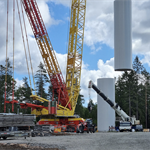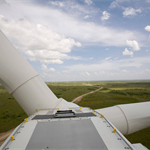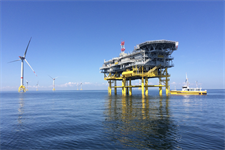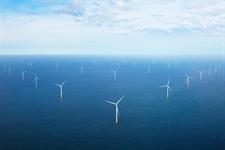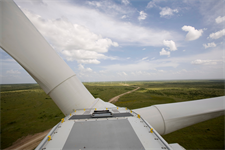Wind operators suffer $4bn hit in Texas cold snap
Energy Disrupter
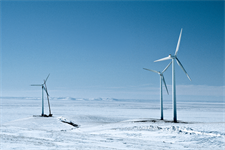
Wind farm operators lost more than $4 billion during the harsh winter storm that caused blackouts in Texas in February, according to new analysis.
Asymmetric price risk in hedging contracts for renewable energy sources was partly to blame for the significant losses suffered by wind farm operators and gains accrued by counterparties, according to consultancy ArcVera Renewables.
Hedging agreements are typically signed between renewable energy asset operators and insurance firms or commodities trading arms of large financial institutions,. They are typically based on financial derivatives designed to produce stable revenues regardless of power price fluctuations and weather-driven variability.
ArcVera explained that the price risk for hedge providers in Texas is limited to the strike price within the contract, while the project owner’s risk is the maximum possible settled price, minus the strike price – nearly $9,000/MWh during the cold snap in February.
Freezing conditions forced power outages at nearly half of Texas’ wind fleet in mid-February. Wind turbines in Texas are ill-equipped to deal with icy conditions, whereas turbines in markets with typically colder climates often are fitted with anti-icing tools.
Outages were also recorded at many other energy sources, including natural gas plants relied upon for baseload generation.
Wind farm operators were forced to buy electricity at abnormally high prices to fulfil their own delivery obligations while parts of their own fleets were forced offline, with some already forecasting multi-million dollar hits to their finances.
The lack of availability prompted grid operator Ercot to set power prices at $9,000/MWh – up from less than $50/MWh before the storm – to encourage electricity generators to return to service.
ArcVera Renewables argued this only exaggerated financial turmoil, as well as the operators’ losses, and did nothing to address the root causes of the outages: cold weather.
It suggested that wind farm operators faced cumulative losses of $4.18 billion during the cold snap. However, the true financial hit is likely to be even greater as ArcVera only analysed 21.8GW of wind farm nameplate capacity – 87% of the 25.1GW total operational wind fleet in Texas at the time.
The average financial impact across all wind farms analysed was $44.4 million, with the highest hit for one project being $172.5 million.
Need for change
The consultancy’s CEO, principal atmospheric scientist and author of the study, Gregory Poulos, warned that cold-weather events worse than the one experienced in February are possible.
He added: “There is a clear need for restructuring electricity system resilience to account for weather-driven production and demand, concomitant with the pace of the transition to renewable energy-dominated production.”
Poulos suggested three changes Texas utility Ercot should make:
- Hedged financial structures in Ercot need to properly reflect realistic meteorological conditions, extreme weather stress tests, and, therefore, more realistic production assurances;
- Hedged products need to modify their strike prices to reflect the asymmetric risks presented by the availability of different resources during extreme electricity demand, Ercot minimum and maximum prices, and market interventions by regulators;
- Wind farm owners and their hedge counterparties need to partner with turbine OEMs to develop reliable, cost-effective weatherization technologies to reduce the asymmetric risks from future icing events.
He also suggested that wind farm operators should consider measures to mitigate turbine icing and appropriate force majeure clauses in hedge agreements to potentially mitigate this asymmetric price risk.





